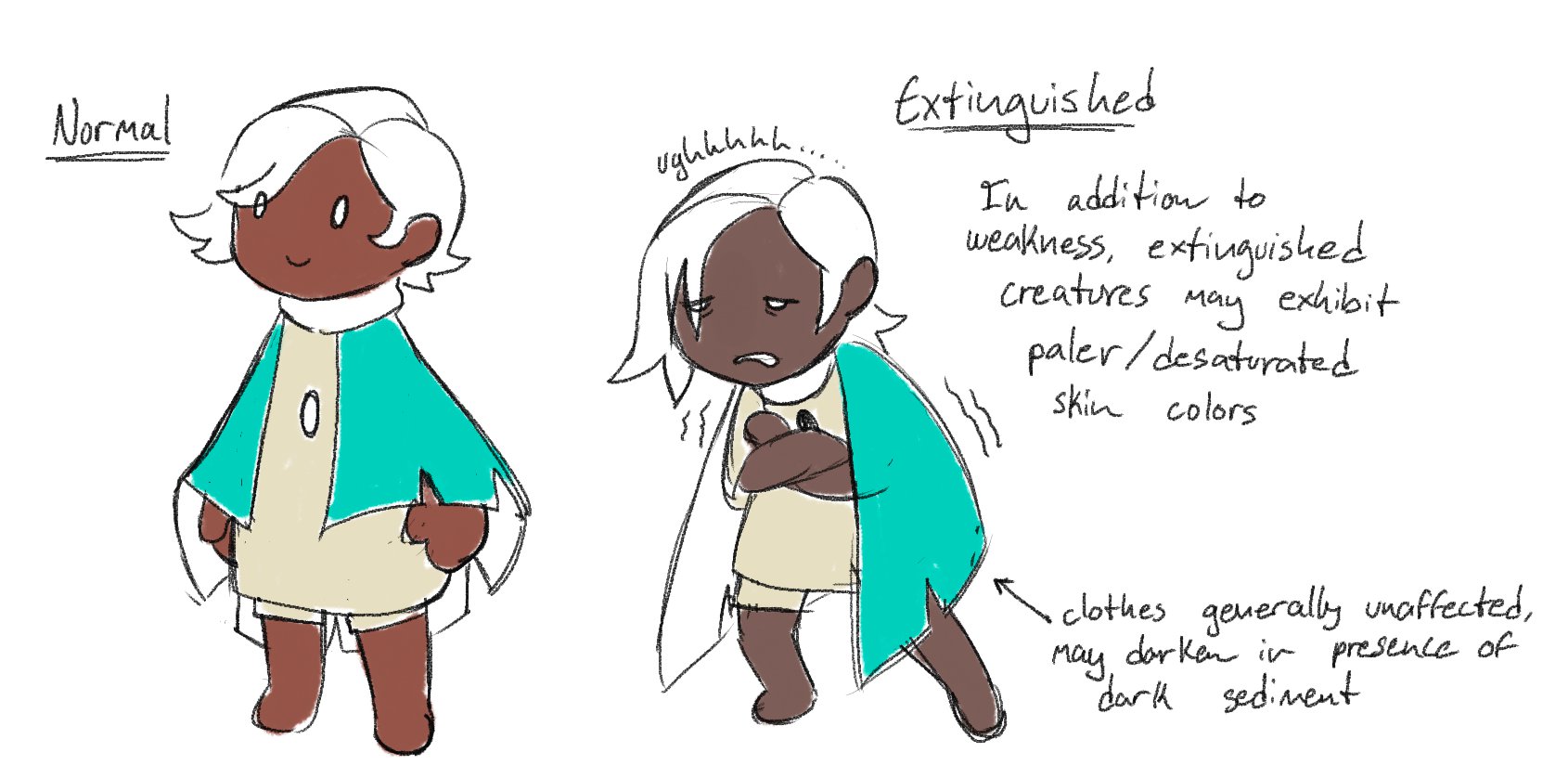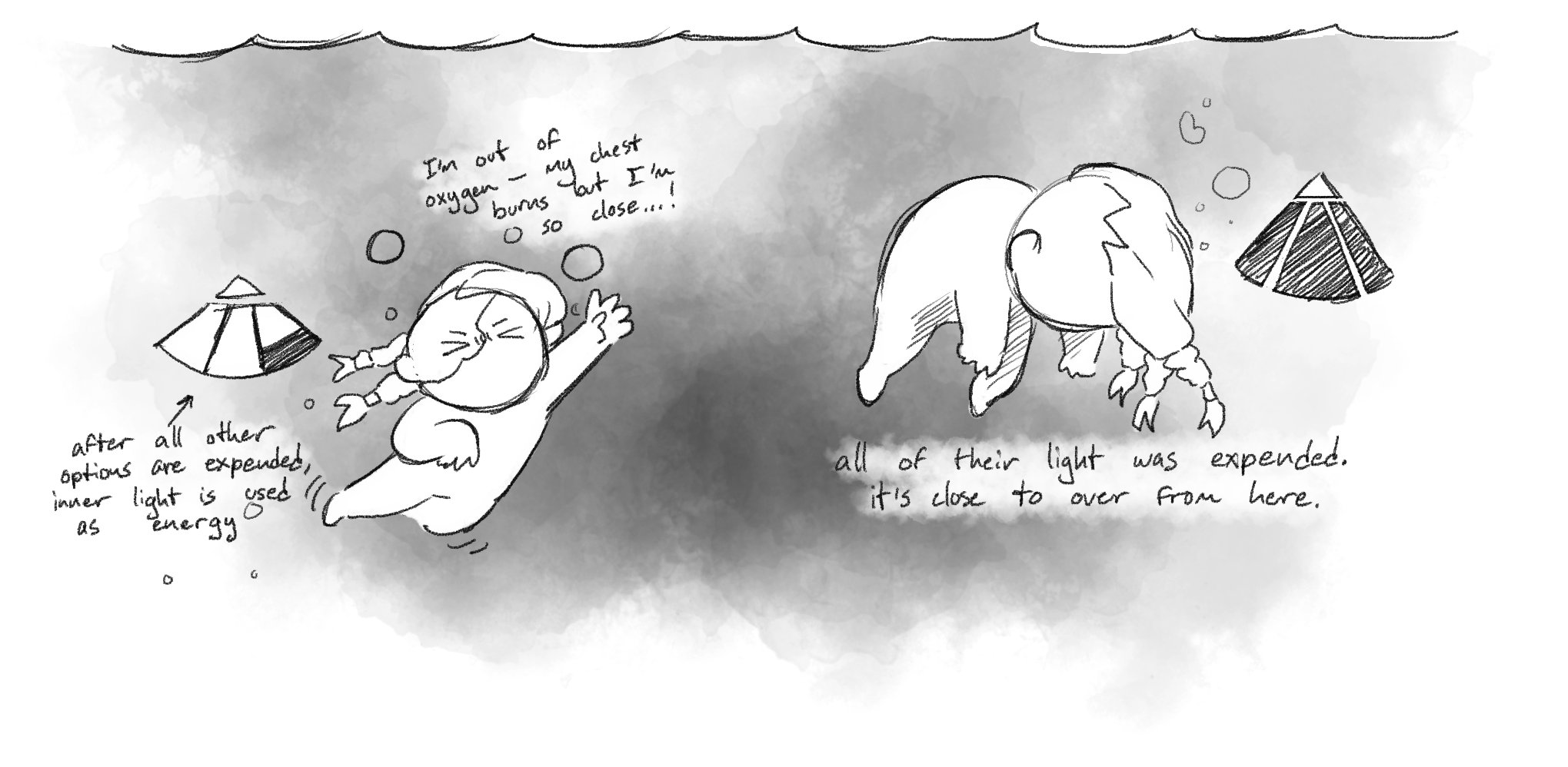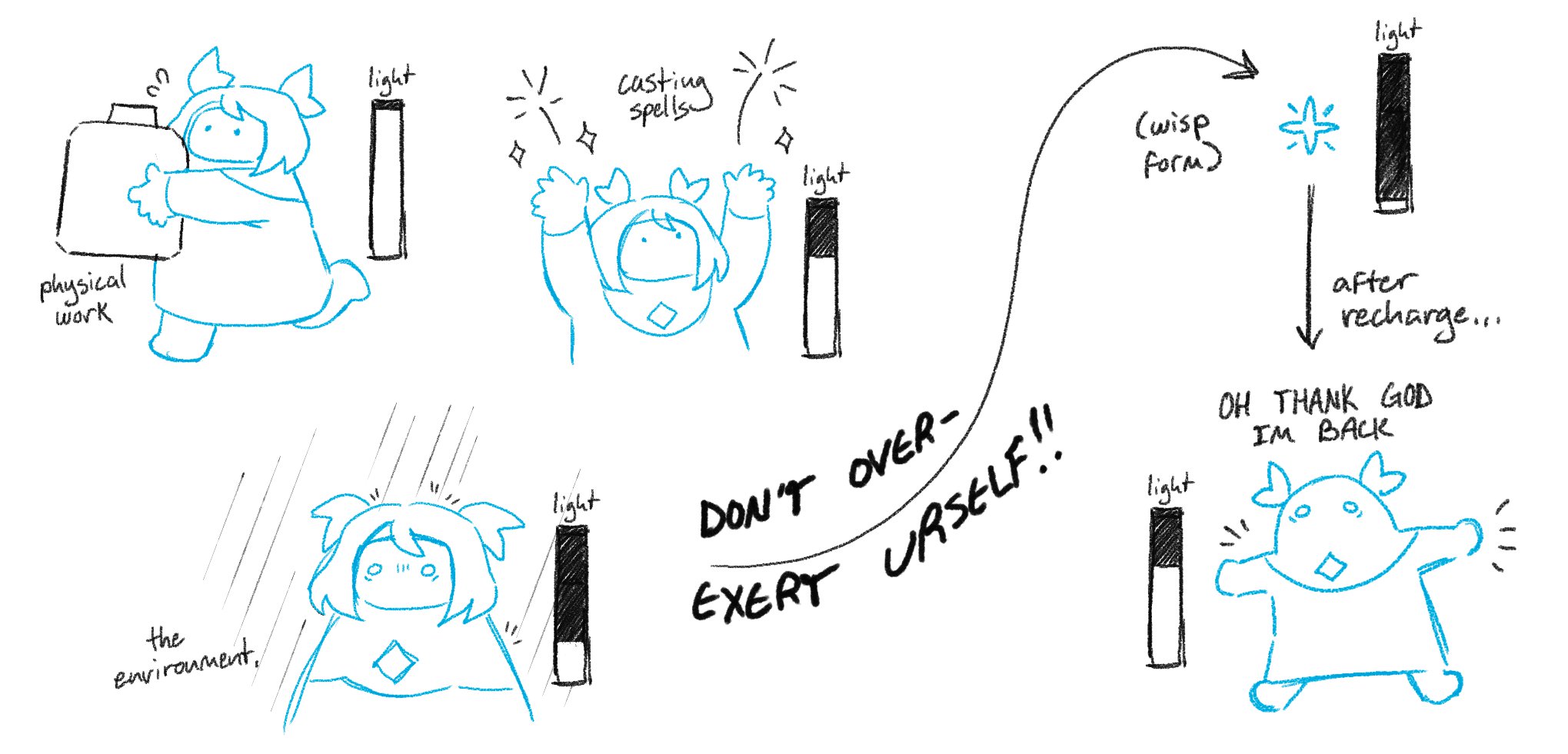More on the conditions for death
For creatures of light, death occurs when the bond between one's body and one's light is severed, but what exactly determines when the bond is broken? To understand this, one can imagine death for light creatures coming in two flavors: light death and corporeal death. Light death occurs when one's light is extinguished for too long, and corporeal death is when one's body undergoes heavy trauma.
Standing underneath dark rain for a long time fulfills the conditions for light death. When one's inner light is extinguished, the body enters a weakened and uncoordinated state. This is not the end, as the body can still move and attempt to get itself somewhere safer, where it's light can be reignited. The longer one's light stays extinguished though, the weaker the bond between one's light and one's body grows, until the two eventually separate. In this way, light creatures can still die even if their body has undergone zero physical trauma.

ID: 2 drawings of the same skykid, one normal and one extinguished. Compared to the normal skykid, the extinguished one appears weaker, has more desaturated skin, and the light core on their chest is dark instead of white. The drawing notes that the extinguished state doesn't affect the coloration of clothes, though the presence of dark sediment might darken the clothes.
Drowning fulfills the conditions for corporeal death. Here, the body is at risk of ceasing, but one's inner light may still be active. One can use the energy emitted by their inner light to "puppeteer" their body, pushing past physical injury and hopefully getting to safety. In the case of drowning, inner light is used to keep swimming despite any pain or lack of oxygen. This may not always work out due to a variety of factors — physical injuries being too great to push through, having a weak inner light, running out of energy, and so on.

ID: 2 drawings of the Cackling Cannoneer swimming and subsequently drowning. In the first drawing, they have run out of oxygen but continue to be able to swim thanks to their inner light, which is providing them enough energy to keep going. The next drawing depicts what happens once the light runs out, where the Cannoneer is floating in the water face down, still.
"Death" for spirits is peculiar since their lights are their bodies. A spirit's light can be depleted by both environmental factors (ex. dark rain) and exhaustion. Strenuous physical activities and spell casting both draw energy from a spirit's light. Overexertion in either regard puts spirits at risk of turning into "wisps". As wisps, spirits lose their body as well as their ability to interact with the physical world. If their light is allowed to go out in this state, the wisp will disappear. Wisps that disappear sometimes reappear as the spirits they once were, others don't. Most spirits don't want to find out the odds of the latter, so they like to stay "alive".

ID: A diagram depicting all the ways spirits can expend/lose their light, as well as what happens when their light runs low. Spirits expend their light by intense physical labor or through spell casting, and can lose it due to environmental factors (such as dark rain). When their light gets dangerously low, they become a wisp, losing their body and ability to interact with the world. If their light is recharged as a wisp, they regain their humanoid body.